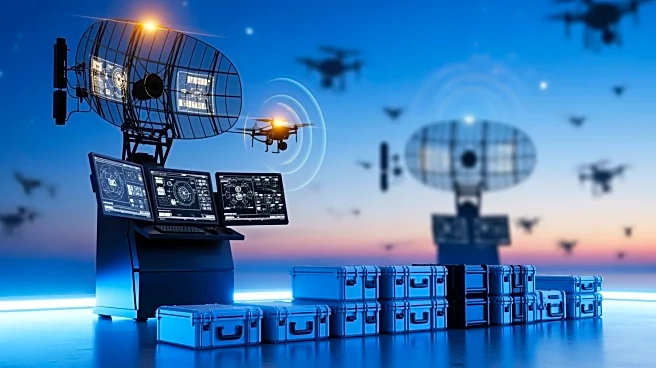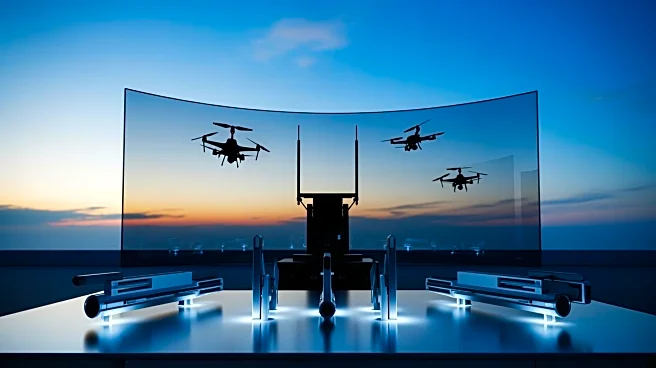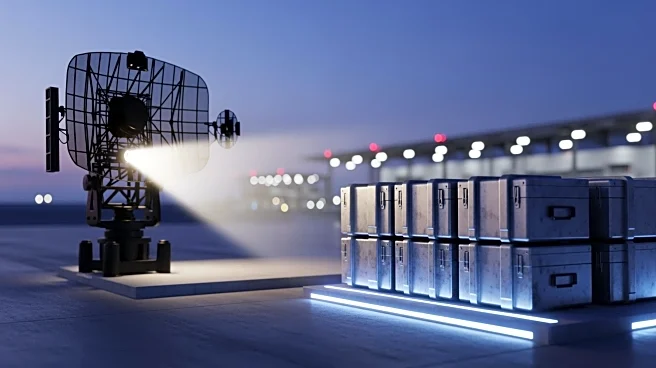What's Happening?
NATO countries are contemplating the construction of a 'drone wall' to protect against Russian drone incursions, following recent incidents where Russian drones entered Polish airspace, leading to the closure
of four airports. This breach marked one of the most significant violations of NATO airspace since the onset of the Ukraine conflict. The proposed drone wall would be a multi-layered defense system, incorporating radars, sensors, and weapons systems to detect and neutralize incoming drones. The urgency for such a defense mechanism has been heightened by the increasing frequency of drone sightings around critical infrastructure in Europe, believed to be part of Russia's hybrid warfare strategy.
Why It's Important?
The development of a drone wall is significant as it represents a strategic response to the evolving nature of warfare, where drones play a critical role. For NATO, particularly countries close to Russia like Poland and Finland, this initiative is crucial for national security. The drone wall could deter further incursions and protect vital infrastructure, thereby maintaining stability in the region. However, the financial implications are substantial, with debates ongoing about funding sources, including potential use of frozen Russian assets. The initiative underscores the broader geopolitical tensions between NATO and Russia, highlighting the need for advanced defense systems in modern warfare.
What's Next?
The initial stages of the drone wall are expected to be operational within months, with full deployment aimed by 2027. NATO's Allied Command Transformation in Virginia is working on long-term solutions to enhance air defense capabilities. The project faces challenges, including the vast area requiring protection and the need for cost-effective solutions. As the situation evolves, NATO will need to balance immediate security needs with long-term strategic planning, potentially involving increased collaboration among member states to share the financial and technological burdens.
Beyond the Headlines
The drone wall concept raises ethical and strategic questions about the militarization of airspace and the potential for escalation. While it aims to protect, it also reflects the ongoing arms race in drone technology, where adversaries continuously adapt to countermeasures. The initiative may also influence international norms regarding drone usage and airspace sovereignty, potentially setting precedents for future conflicts.












